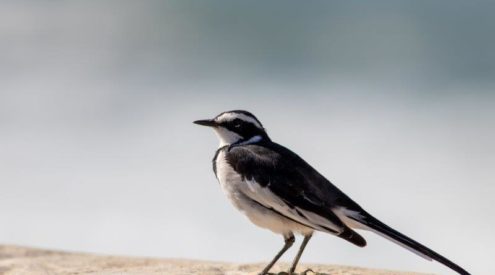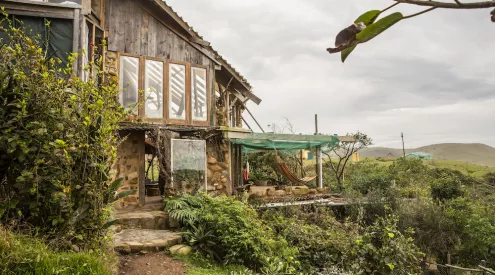The daily ritual of the nearendemic (almost the entire world population occurs within Southern Africa), near-threatened Cape cormorant is quite a spectacle. A black line ripples like kelp in the skies off South Africa’s western coastline and the horizon seems to be alive with birds. When they alight on the water feathers glisten like scales, wings become fins and bubbles stream like ropes to the surface as they dive after their prey.
Cormorants (not to be confused with the African darter, which has a spear-shaped bill for stabbing) are foot-propelled pursuit-divers. These medium to large water birds have long slender necks, short stout legs, fully webbed feet, eyes often brightly coloured and hook-tipped bills for grasping prey.
South Africa is home to Cape, bank, crowned, white-breasted and reed cormorants (our only non-coastal cormorant). Of the coastal species, the most commonly seen is the Cape cormorant, which breeds on islands and large offshore boulders from Namibia to Algoa Bay, with non-breeding birds occasionally found as far up the east coast as northern KwaZulu-Natal.
As you become better acquainted with this species, its turquoise iris and orange-yellow facial skin will become obvious and you’ll begin to notice there are other black cormorants about, which look a little different. You may observe a bird with a stubbier bill, angled forehead, a more matt plumage, a plumper build, an orange-brown iris (that is oddly greenish below) and black facial skin. This is a bank cormorant and spotting one of these would be quite a find. The species is endangered, with a world distribution limited to the Benguela coast from central Namibia to Cape Agulhas. Unlike the Cape cormorant, which can be quite nomadic, the bank cormorant seldom moves further than 20 kilometres from its breeding colony.
Another black cormorant can be spotted on the rocks or floating above the swell: the crowned cormorant, a small, short-billed, long-tailed marine cormorant, occurring from Namibia to the Tsitsikamma coast. As with the other species, it’s endemic to Southern Africa. It’s easily told apart from its congeners by its glossy plumage and prominent crest. Although it occurs in coastal waters, it will sometimes roost in nearby wetlands and estuaries, often leading to its confusion with the reed cormorant, a bird resident to lakes, rivers and dams. The crowned cormorant’s back feathers appear more uniformly black than those of the reed cormorant, so look carefully for this. Immatures of the two species are told apart by looking at their breasts: young reed cormorants have much whiter underparts, while those of young crowned cormorants are a dirty, pale brown.
The white-breasted cormorant is found along the entire coastline and throughout most of the hinterland. It’s the biggest and heaviest of the five species and it’s the easiest to identify with its bright white throat and breast. Cormorants link the land and the sea and to watch them is to be reminded of the interconnectedness of nature – a celebration of what birding is all about.
The costs of coastal decline
The future of three of South Africa’s cormorants – bank, crowned and Cape – is uncertain. Their numbers are decreasing dramatically for reasons we don’t yet understand completely and further reseach into the complex nature of the problem is needed before a solution can be found. BirdLife South Africa’s Seabird Division needs your help to raise funds for urgent scientific investigations. By becoming a member of the organisation, you’ll help spread its message of environmental awareness and conservation hope. www.birdlife.org.za
(Photo by Dick Daniels/Wikimedia Commons)


















